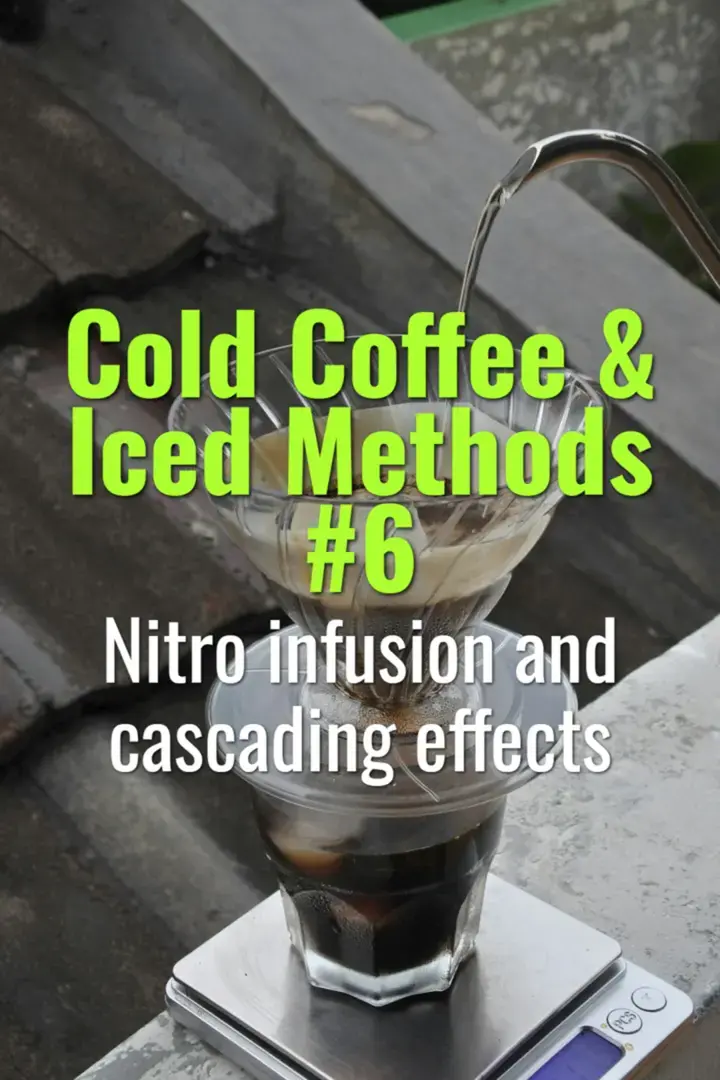Nitro infusion and cascading effects
How nitrogen infusion transforms cold brew into nitro coffee, the science behind cascading bubbles, and the sensory effects.
- Coffee Basics Nerds
- 2 min read
Article 6 of 12 in Cold Coffee & Iced Methods/

What is Nitro Coffee?
- Cold brew coffee infused with nitrogen gas (N₂) under pressure.
- Dispensed through a stout faucet with a restrictor plate (similar to draft stout beer).
Infusion Process
- Cold brew is kegged and connected to a nitrogen tank.
- Coffee is pressurized (typically 30–40 psi).
- Dispensed through restrictor plate, which forces nitrogen out of solution.
Cascading Effects
- Mechanism: Nitrogen forms extremely small bubbles (smaller than CO₂).
- Visuals:
- Coffee appears to cascade downward inside the glass.
- A creamy head forms on top, like Guinness beer.
- Physics: Cascading happens because rising central bubbles push liquid upward while edges fall, creating circular flow.
Sensory Impacts
- Texture: Silky, creamy mouthfeel due to microbubbles.
- Flavor: Nitrogen is inert—adds no taste—but enhances sweetness perception by smoothing bitterness.
- Aromatics: Dense foam cap traps aromatics, releasing slowly.
Key Variables
- Pressure: 30–40 psi for infusion; higher pressures risk over-foaming.
- Temperature: Serve very cold (2–4 °C / 36–39 °F) for best cascading effect.
- Base Coffee: Smooth, chocolatey, or nutty cold brews complement nitro presentation.
Practical Considerations
- Requires kegging system, nitrogen tank, and stout faucet.
- Must keep system clean to avoid microbial contamination.
- Shelf life extended slightly by nitrogen’s inert atmosphere, but coffee still degrades.
Summary
Nitro infusion transforms cold brew into a visually dramatic and texturally creamy beverage. The cascading effect comes from nitrogen microbubbles, creating a stout-like appearance and silky mouthfeel, enhancing sweetness and drinkability without adding flavor.